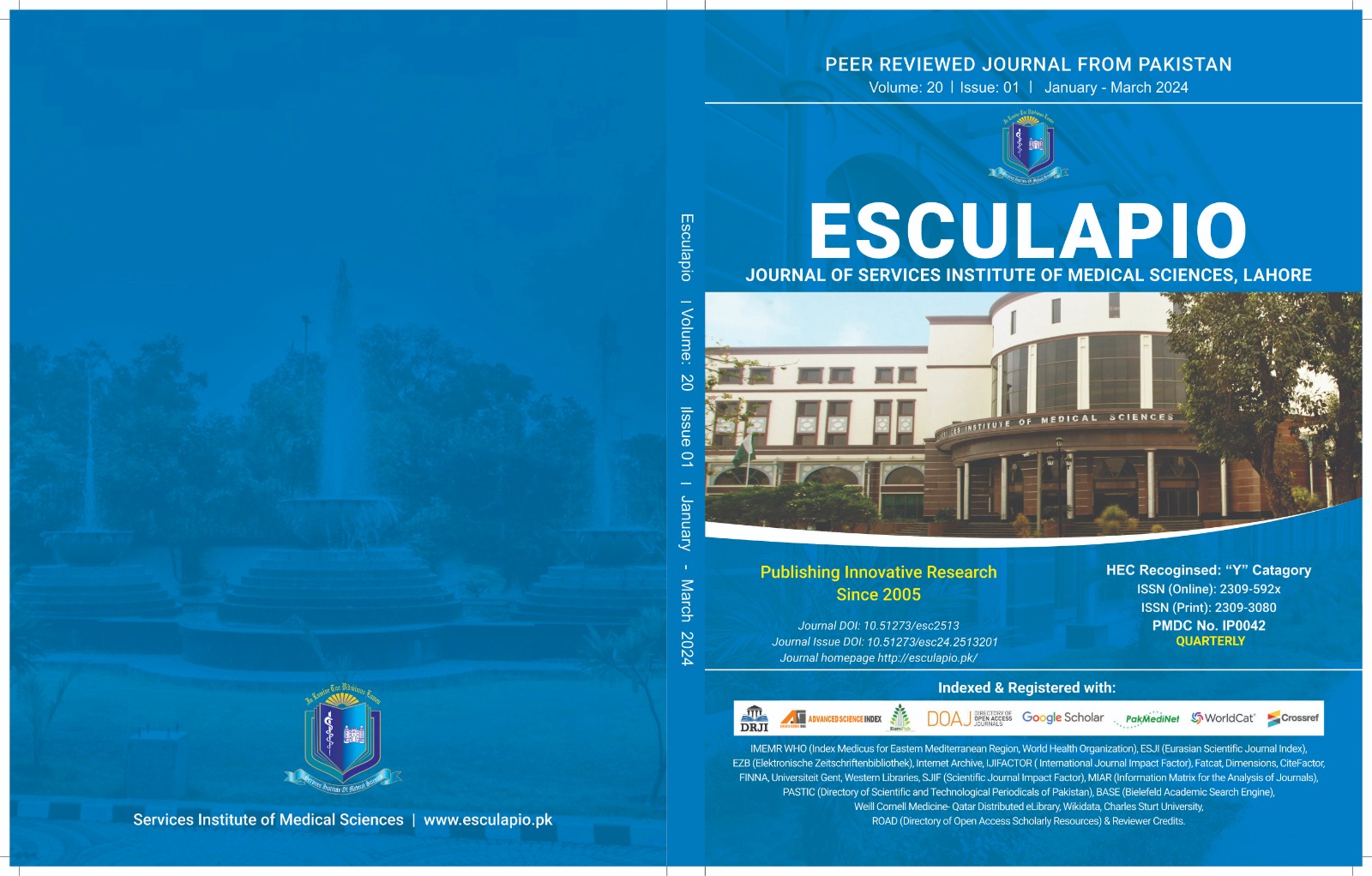The Diagnostic Accuracy of Sonographic Twinkling Artefact in Localization of Ureteric Stones Keeping Low Dose Computed Tomography as the Gold Standard
DOI:
https://doi.org/10.51273/esc24.251320120Keywords:
Doppler ultrasound, Twinkling artifact,, computed tomography,, ureteric calculi.Abstract
Objectives: To determine the diagnostic accuracy of color Doppler twinkling artifact in conjunction with grey-scale ultrasound for diagnosis and localization of ureteric stones, keeping low dose computed tomography findings as the gold standard in adult patients presenting with lumbar pain.
Materials & Methods: In this cross-sectional study, a group of 190 adult patients were enrolled for the diagnosis
of ureteric calculi. Each subject was examined using greyscale ultrasound, followed by color Doppler ultrasound for twinkling artifacts. The effectiveness of ultrasound in identifying calculi was evaluated by comparing it to the low dose computed tomography. Density of the stones in computed tomography was correlated with the outcome of shock wave lithotripsy. All the collected data was entered and analyzed on SPSS version 25.0.
Results: The mean age of the patients was 48.41±16.69 years. For diagnosing ureter calculi the sensitivity, specificity, negative predictive value , positive predictive value, and diagnostic accuracy of Doppler ultrasound
were 90.4%, 73.9%, 77.2%, 88.7% & 85.3% respectively taking computed tomography findings as gold standard.
Conclusion: Twinkling artifacts in conjunction with grey-scale ultrasound demonstrate considerable sensitivity
and relatively low specificity in diagnosing ureteric calculi.
Downloads
Published
How to Cite
Issue
Section
License
Copyright (c) 2024 Esculapio Journal of SIMS

This work is licensed under a Creative Commons Attribution-NonCommercial-ShareAlike 4.0 International License.










